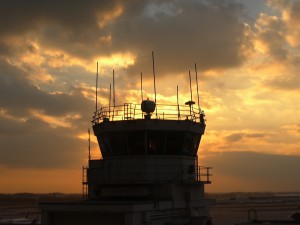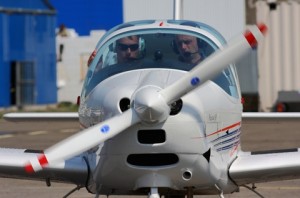
Okay, so I may be a little late to this party, but mainly it was because I had my boots on the ground, actaully doing some politics about it instead of posting about it here, but I think I have mostly done all that I can on the subject for now, and can take a minute to post about the situation…Did you know that many airport control towers are not FAA-run control towers? It’s true. Many control towers around the USA are “contract” control towers, meaning that the FAA does not run them, nor are the controllers FAA employees.
“So what?” you may ask.
Here’s what – due to the “sequester” (and I’m not about to get into the politics of left vs. right, Democrat vs. Republican, conservative vs. liberal – all have had a hand in this SNAFU, thank you very much), the FAA is being asked (forced) to cut over $600 million (something like $637,000,000.00). So as part of that mandate, they are planning on closing 149 contract towers across the country.
If you are a part of (or even just interested in) aviation, these control tower closures affect you – they are all over the US, including two airports in my neck of the woods – KOSU (Don Scott Field – Ohio State University Airport) and KTZR (Bolton Field). Want to know which airports will be affected where you are? Click here for a list of towers to be closed.
In a nutshell, airports in 38 states will be affected by the control tower closures. Here’s the breakdown by state:
|
|
|
Let me give you the backstory:
In early March 2013, the FAA stated that they were going to close 173 contract towers across the country, and gave less than a month for airports and affected citizens to voice their opinions. MANY of the airports on the list, and many pilots and other aviation aficianados submitted concerns – not only to the FAA, but also to their representatives in congress. I, myself, emailed my own congressperson, and also the two who represent the OSU airport area, as they (and their constituents) would be directly affected by the control tower closures.
I got a response back from one of them, as of this writing. It was pretty “form letter” and didn’t say much. Pretty much what I’ve come to expect from any of our “representatives.” So who knows whether it did any good, but I certainly felt better having done it.
These towers were scheduled to start closing on April 7th, 2013, and as that date drew closer, the number of towers scheduled to close started to shrink, and ultimately landed at 149 (which is where it still sits today).
On April 5th (the Friday before the closures were scheduled to start, the FAA announced that they would “delay” the closures until June 15th.
And welcome to the present day – in a little over a month, all of the airports above, which currently have control towers at least part-time, will no longer have control towers, making all of the airports “non-towered” fields.
Now, this sounds scary, but it isn’t in general. Many (if not most) of the airports on the above list are probably non-towered fields part of the time anyway (Bolton Field in Columbus, Ohio, for instance, only has tower service from 7:30am to 7:30pm). Additionally, a large number of them are probably single-runway, making them easy to understand and use with no assistance from Air Traffic Control (again, Bolton comes to mind). Pilots are trained to communicate, use staandard procedures, and be vigilant for other aircraft both on the ground and in the air at non-towered fields anyway. We all know how to operate into and out of these kind of fields safely.
That said, many (if not all) of these airports are used as “relievers” for larger, busier airports (both Bolton and Don Scott (OSU) are relievers for Port Columbus, and Cuyahoga County is a reliver for Cleveland Hopkins). Without a control tower, some pilots may choose to go to the larger airport so that they can get ATC service all the way to the ground (and even on the ground from ground control). Some of this might be simply for convenience, but in other cases it may be that these airports will lose some instrument approaches due to the tower no longer providing service, meaning in inclement weather, pilots may HAVE to go to the busier airports – at best causing more congestion; at worst causing safety issues due to the mix of aircraft capability and pilot experience!
Additionally, I would guess that at least a few of these airports are just simply too complicated to safely be used as a non-towered airport – I’ll point to OSU airport. This airport has 4 runways (meaning aircraft can take off and land in as many as 8 different directions). Pick any one of these runways, and it intersects with a minimum of two of the other runways (two of the runways intersect with all three of the others!). I can’t speak for other pilots, but given the choice of other airports, I would go elsewhere. Unfortunately, as an instructor out of this airport, I may not have any choice in the matter!
So what can we do? Just sit and wait for the FAA to shut these towers down?
Absolutely not! If you are concerned about this, or are directly affected, or just want to make people aware, write your representative(s)! Call your local news station (radio, TV, or both)! Write a letter to the editor of your local newspaper(s)! Join (or get more directly involved in) an aviation interest group like EAA or AOPA (among others). Make your voice heard! Get more people involved in aviation – take a friend or a family member flying. Not a pilot? Start taking lessons, or go on an intro flight, or call up your pilot friend and give him/her a reason to go up with you! Go get a $100 hamburger (maybe take a reporter with you, or your representative)! There are a million ways to support aviation, not the least of which is to be active in the industry – even if it is just to take your kids to watch the planes take off and land.
Let Michael P. Huerta (the FAA Administrator) know how you feel about the tower closures. Write him a letter personally:
FAA Headquarters
Federal Aviation Administration
800 Independence Ave, SW
Washington, DC 20591
I’m not a wild-eyed revolutionary by any means (at least not anymore), and I understand the concern about our spending here in the United States. I know that there is a LOT of waste in the government. But any kind of forced cutting of programs and departments without really looking at the consequences is a bad move, in my opinion. It means knee-jerk reactions that will have unintended, possibly disastrous results. And I’m not just talking about the FAA, but in all other aspects of our government as well – military, social, environmental, business, etc. This kind of thing takes planning and research, and a “time-bomb” such as the sequester is completely the wrong way to go about it. Unfortunately, reality doesn’t win elections – exaggerated issues and posturing do. Let’s change THAT, right after we get this control tower thing figured out…
Andrew Hartley is a certificated flight instructor in Columbus, Ohio – and he WILL delete any strictly political comments that do not add value to the discussion. You’ve been warned.
